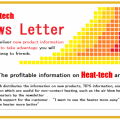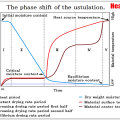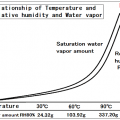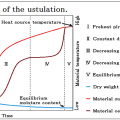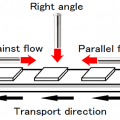INDEX
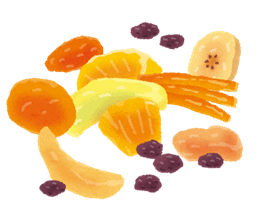
More quickly, More uniformly, demanded from the dry process in the manufacture.
In order to realize it, it is important to know how heat and a substance will move in the from internal to surface for dryness.
In addition, it is important to know what kind of process a dry object changes by to solve troubles such as non-drying, crack, foaming, transformation to occur by a dry process.
This seminar describes a fundamental theory about the heat flow and mass transfer in material as that foundation, and explains the practical use method.
Science of the drying – Table of Contents
Ⅰ. Basic knowledge of the drying
1.How does the drying progress?
1-1. What is drying.
1-2. The phase shift of the ustulation.
1-3.How to expressions the moisture in the material.
1-4. Change of weight and the temperature by the drying.
1-5. Equilibrium moisture content and Critical moisture content – Influence of temperature and relative humidity.
1-6. The local moisture content and the average moisture content.
1-7. Drying characteristic curve – Relation between a drying rate and moisture content.
1-8. Why is the constant drying period. – Moisture movement in wet material.
1-9. How to expressions the constant drying period.
2.Property of the humid air
2-1.What is the humidity?
2-2.Vapor included in the air has a limit.
2-3.Ask for saturation water vapor pressure.
2-4.The relative humidity
2-5.The absolute humidity
2-6.Relationship of absolute humidity and the relative humidity.
2-7.Psychrometer and Hygrometer
2-8.The principle of the Psychrometer
2-9.Latent heat, Sensible heat, and Evaporation heat ( or Vaporization heat )
2-10.The Psychrometric charts
2-11.Dew point and Dew point meter
Ⅱ. Hot air drying and Infrared ray drying
3.Basic knowledge required for optimization of the drying process
3-1.Heat transfer and Mass transfer
3-2.Evaporation of water
3-3.Heat balance equation of the drying
3-4.5 patterns of the drying curve
3-5.Balance of the process
3-6.Importance of dehydration
3-7.Three types of drying 2.Drying of the surface attached water
3-8.Three types of drying 3.Drying of the paint film and Membrane
3-9.The 6 Fundamental law and the 4 thermodynamic law about drying.
4.How does Hot air drying progress?
4-1.The air and the nitrogen
4-2.Drying speed and wind speed of the hot air
4-3.Drying speed and temperature of the hot air
4-4.Drying speed and swept area of the hot air
4-5.Drying speed and angle of the hot air
5.How does Infrared ray drying progress?
5-1.Infrared rays wavelengths and water
5-2.Heat balance equation of Infrared ray drying
5-3.Efficient method of Infrared ray drying
6.The hot air drying and the infrared ray drying – combination of convection heat transfer drying and radiation heat transfer drying
6-1.The most efficient drying method-Combination of the hot air drying and the infrared ray drying
 HEAT-TECH Best Technology Online Shop
HEAT-TECH Best Technology Online Shop 


